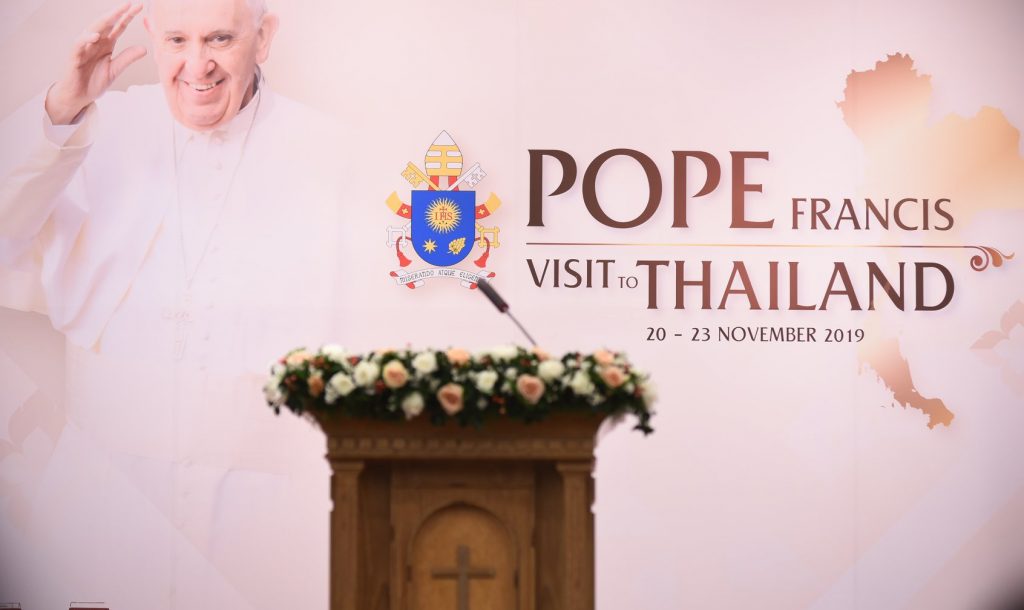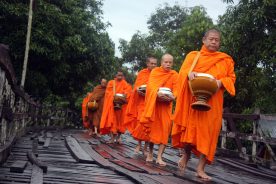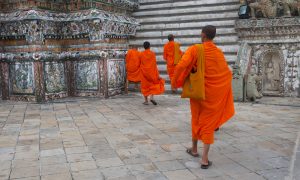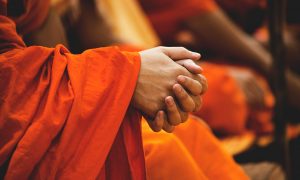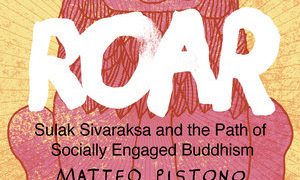In a somewhat shorter version, this piece originally appeared as an ISEAS-Yusof Ishak Institute commentary under the title, “Papal Visits and the State of Interreligious Relations in Thailand“.
Pope Francis, the supreme head of the Catholic Church, is visiting Thailand this week. It’s only the second papal visit in 35 years to the predominantly Buddhist country, where Catholics account for merely 0.5% of the population. But historically, interreligious dialogue has been indispensable to the construction and reaffirmation of the Thai Buddhist national identity.
The pontiff is scheduled to meet with King Vajiralongkorn, the Buddhist monarch and defender of all faiths in the kingdom. He will also meet with the Supreme Patriarch of the Thai Sangha, the country’s highest-ranked Buddhist monk. The Papal Mass celebrated at the National Stadium is scheduled to be broadcast live on television, showing one of the biggest gatherings of local Catholics in Thailand’s history.
These events are highly significant to Buddhist-Catholic relations in the country. The latest papal visit has brought about a new episode of interactions between Thailand’s Buddhist majority and the religion some hardliners identify as the “foreign faith”. The visit also highlights the current state of problematic interreligious relations in the country. As Pope Francis declared in his pre-visit message to the Thai people, he hopes the trip will “emphasise the importance of interreligious dialogue, understanding and brotherly cooperation”.
During the Cold War years, the Thai Sangha was obsessed with fears of subversion by foreign religions. Monks and some Buddhist laymen protested against the local Catholic Church’s use of Buddhist terms and what they saw as imitations of Buddhist rituals. Vocabularies previously reserved for Buddhist monastic usage such as sangkharat (Supreme Patriarch), sammanen (novice) and kathin (annual offering of saffron robes) were applied to Thai Bishops, seminarians and the Catholic Church’s fund-raising activities in Thailand. As a result, Buddhist monks accused Catholic priests of subtly “swallowing” Buddhism by slowly incorporating other religions into Catholicism—allegedly following the directives of the Second Vatican Council (1962–65).
It was no surprise that the first papal visit to Thailand worried the Sangha greatly. Pope John Paul II’s visit in 1984 triggered suspicions of a Catholic invasion and reflections on the perceived “weak” state of Buddhism. The unprecedented show of Catholic unity at the Papal Mass during the visit put pressure on monks to reverse the perceived decline in Buddhism’s popularity and support. As a result, they organised an annual Buddhism Promotion Week—a festival celebrating Buddhist teachings that continues to this day.
Perhaps the most powerful legacy of Pope John Paul II’s visit was the late King Bhumibol’s welcome remarks, in which he stated, “Thai people are religious. Most have faith in Buddhism, which is the national religion”. This brief episode of interreligious dialogue between the late king and the late pope has become a sacred reaffirmation of Buddhism’s superior status. It has often been cited by adherents to the nationalistic “Buddhism protection movement”, founded two decades later, as an argument for the constitutional recognition of Buddhism as Thailand’s official national religion.
But Pope Francis’ visit to Thailand presents a very different picture. The mistrust of Catholics prevalent in 1980s has mostly faded away. The West is no longer considered a source of potential threats to national security and the Thai-Buddhist identity, especially relative to perceived emerging threats from Islamic extremism.
Since the persecution of seven Thai Catholic martyrs during the 1940 Franco-Thai War, no further state violence has disrupted the peace of the local Catholic community. Pope Francis himself has praised Thai Catholics for shifting their focus from aggressive evangelical activities to charity, which contributes more to the welfare of the Thai nation and to peaceful coexistence with the Buddhist majority.
At the same time, religious chauvinism has been on the rise among members of the Buddhist monastic order over the past two decades. Thai monks who ascribe to the Buddhism protection movement hold that malevolent actions of foreign religions violate the right of Buddhism to be the predominant faith officially upheld by the Thai state.
Pope Francis’s visit has now stirred old sentiments and aroused attention in the contemporary Buddhist society. General public opinion holds that Thai Catholics are relatively “quiet and peaceful”. The incumbent pope’s openness and modern thought are also admirable for most Thai social media users. However, those inclined to Buddhist chauvinism argue that Catholicism may still be a threat to Thai Buddhism. They have pointed out that Catholic media “suspiciously” used Buddhist vocabularies to publicise the preparations for this week’s papal visit. For the chauvinists, this proves that the local Catholic Church still adheres to the old approach of “creeping assimilation” with the aim of swallowing Buddhism.
Nevertheless, the focus of those determined to “protect” Buddhism is now centered on Islam. The escalation of violence in Thailand’s Deep South, where Muslim secessionists have previously killed Buddhist monks and burned down monasteries, sounds much more alarming to the Buddhist chauvinists than what they consider as insincere peace dialogue from the Catholics.
In an analogy well known to hardline monks, Catholicism is like a stealthy python that slowly constricts and swallows its victims. But they consider the Islamic threat to be more serious, believing that Islam attacks like a fierce, violent cobra whose venom quickly kills. Because of this relative perception, the revived attention to and suspicion of the Catholic Church’s activities are not likely to cause a fresh round of domestic hostility in Buddhist-Catholic relations.
Though Pope Francis has praised recent Thai governments for “working hard” to achieve interreligious harmony, there is reason to doubt the truth behind such a compliment. There has been no evidence of serious state efforts to promote ecumenism for years.
Thai governments in the recent past have stuck to a policy of avoidance and suppression of religious mishaps. In 2016, the junta issued NCPO Head Order No. 49/2559. Using the absolute power granted by Article 44 in the temporary constitution, junta leader General Prayuth Chan-ocha ordered government officials and all religious organisations to implement measures to prevent religious conflict, religious violence, subversive activities to undermine Buddhism and other religions, and any disrespect to faiths in Thailand that could bring about disputes and disunity. This command was meant to restore peace and order to the country’s religious realm. But the NCPO has not proactively encouraged interfaith dialogue—the foundation of true understanding. The Thai Catholic strategy of keeping a low profile is the real reason for the seemingly peaceful Buddhist-Catholic relations of recent decades.
Purging the Thai Sangha
The persecution of one of the junta's most outspoken supporters, Buddha Issara, demands explanation
 Facebook
Facebook  Twitter
Twitter  Soundcloud
Soundcloud  Youtube
Youtube  Rss
Rss 